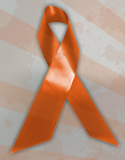Better Road Conditions Could Have Saved My Sister's Life
 |
WASHINGTON, May 26, 2010: The following is an op-ed written by Bradley M. Sant, Esq.:
This Memorial Day holiday, about 1,000 people will die in car crashes if trends from previous years continue. These deaths are much more than a highway statistic. I know. Early one spring morning in 1986, I received a call from my weeping mother saying that Sandra, my younger sister, had just been involved in a serious auto accident. We didn't know if she would live through the night. I took the next flight to Boston and rushed to the hospital.
I did not make it in time. My last goodbye was to my beautiful young sister's cold and broken body. About 40,000 times each year, including the 1,000 over the Memorial Day weekend, families will make similar heartbreaking farewells to loved ones who are crash victims.
The drunk driver who killed Sandra survived with a few scratches. We learned he had been arrested 17 times for drunk driving and that fines, license revocations and even jail time didn't help him.
The question facing our society is how to prevent such tragedies.
U.S. DOT Secretary Ray LaHood and many other safe driving advocates have rightly been working to reduce motor vehicle crash-related deaths by emphasizing the dangers of distracted driving. Behavior-changing campaigns do improve some bad habits, but they have no effect on others or on someone who simply falls asleep at the wheel or who swerves to avoid something in the road and crosses into oncoming traffic.
Last year, the Pacific Institute for Research & Evaluation unveiled a groundbreaking research report, "On a Crash Course: The Dangers & Health Costs of Deficient Roadways." Its key finding? Each year, bad road conditions are a contributing factor in more than half of all U.S. deaths resulting from motor vehicle crashes, and cost the nation $217 billion.
The report upset some well-intentioned, but misguided road-safety advocates. Why? Because it made a forceful case for placing greater emphasis on building safer roads, which seemed to threaten advocates for so-called behavior-changing campaigns designed to reduce distracted and impaired driving, and increase seat-belt use.
However, the number of vehicular accidents on our highways demands a much more robust campaign. In an era of crumbling roads and bridges, we need revitalized infrastructure that is capable of "forgiving" errant driving and behavior.
In the transportation community, the much-touted policy goal of "Vision Zero" or "Towards Zero Deaths" is catching on around the world. What is not known by many is the reasoning behind this idea, which was developed in Sweden in 1997. The Swedish approach is to build and manage roadways that anticipate human error and mitigate the consequences. "What we must realize is that we have a fundamental problem with road safety all over the world--that is, we have put the blame on the victims," wrote Patrick Magnusson, who heads Sweden's Vision Zero Academy. "Those who designed the system have never had full responsibility. We want to change this."
That, in essence, is the same conclusion reached in "On a Crash Course." Dr. Ted Miller, the study's primary author, called for replacing non-forgiving poles with breakaway poles, using brighter and more durable pavement markings, adding rumble strips to shoulders and mounting more guardrails or safety barriers; then, over time, add or widen shoulders, improve roadway alignment, replace or widen narrow bridges, reduce pavement edges and abrupt drop-offs, and clear more space adjacent to roadways.
Of course, we must make sure drivers accept responsibility for their actions. But collectively, the public and private sectors of the transportation design and construction industry should work to ensure that when drivers make mistakes, they, along with innocent passengers and motorists, do not pay for those errors with their lives.
The road where Sandra was killed is a typical rural two-lane road with no shoulders. Median barriers would have prevented the drunk driver from crossing into on-coming traffic and hitting her head-on. A longer sight distance might have allowed Sandra to see him coming earlier. A wide shoulder and clear zone might have given her a place to avoid the collision.
Congress is now eight months late in enacting a new long-term highway and transit bill. The carnage of another 1,000 roadway deaths during the holiday weekend is unacceptable and should be reason alone to end the delay.
Now is the time for the federal government to significantly boost investment in an ever-aging infrastructure network and dedicate increased funding for roadway safety improvements. It may help to spare others the tragedy from which no family, including my own, can ever recover.
Brad Sant is vice president of safety and education at the American Road & Transportation Builders Association.


